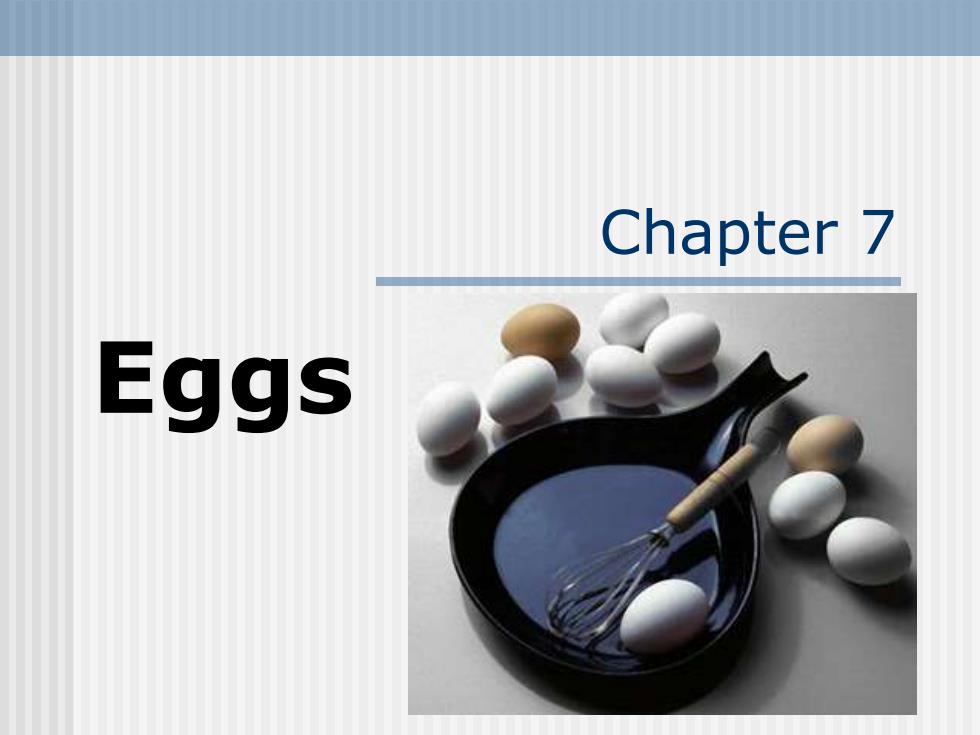
Chapter 7 Eggs
Chapter 7 Eggs
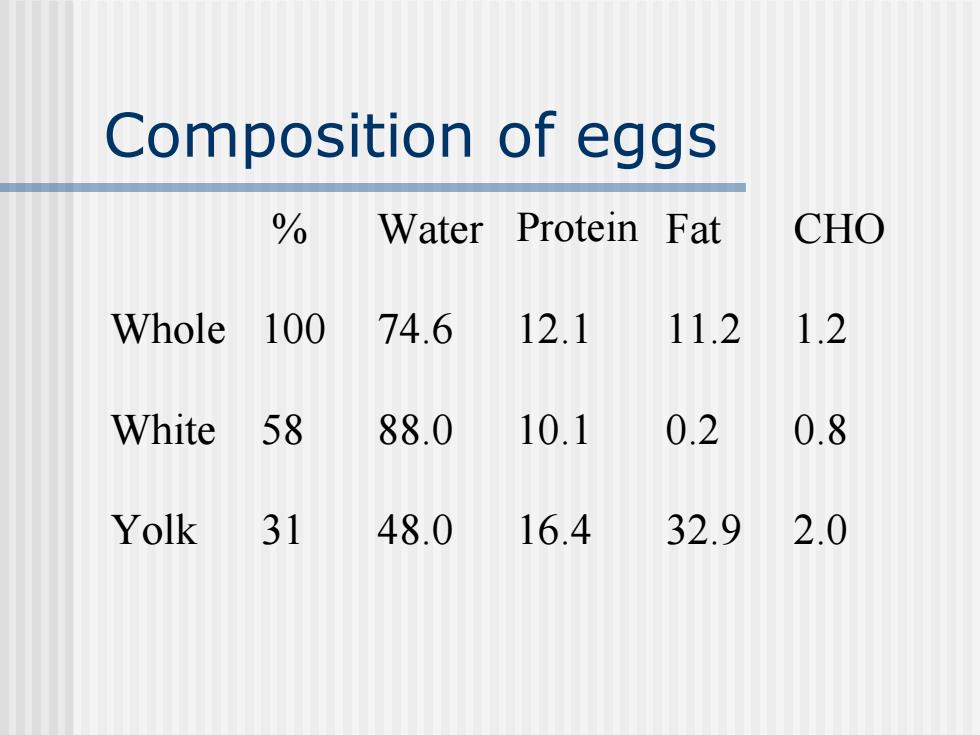
Composition of eggs % Water Protein Fat CHO Whole 100 74.6 12.1 11.2 1.2 White 58 88.0 10.1 0.2 0.8 Yolk 31 48.0 16.4 32.9 2.0
Composition of eggs % Water Protein Fat CHO Whole 100 74.6 12.1 11.2 1.2 White 58 88.0 10.1 0.2 0.8 Yolk 31 48.0 16.4 32.9 2.0
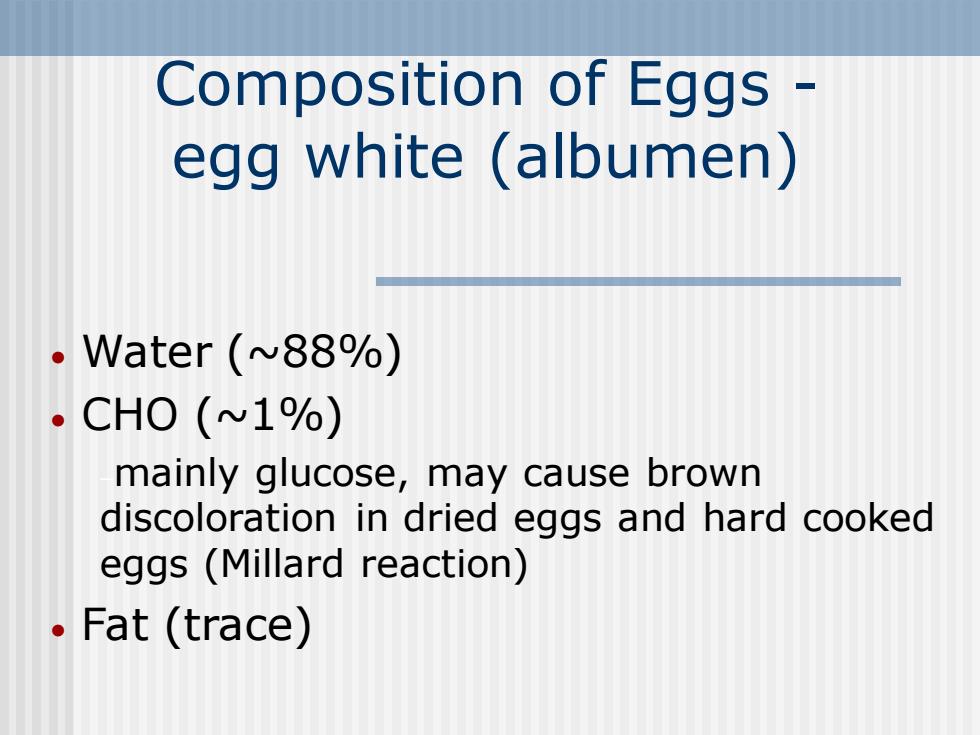
Composition of Eggs - egg white (albumen) • Water (~88%) • CHO (~1%) −mainly glucose, may cause brown discoloration in dried eggs and hard cooked eggs (Millard reaction) • Fat (trace)
Composition of Eggs - egg white (albumen) • Water (~88%) • CHO (~1%) −mainly glucose, may cause brown discoloration in dried eggs and hard cooked eggs (Millard reaction) • Fat (trace)
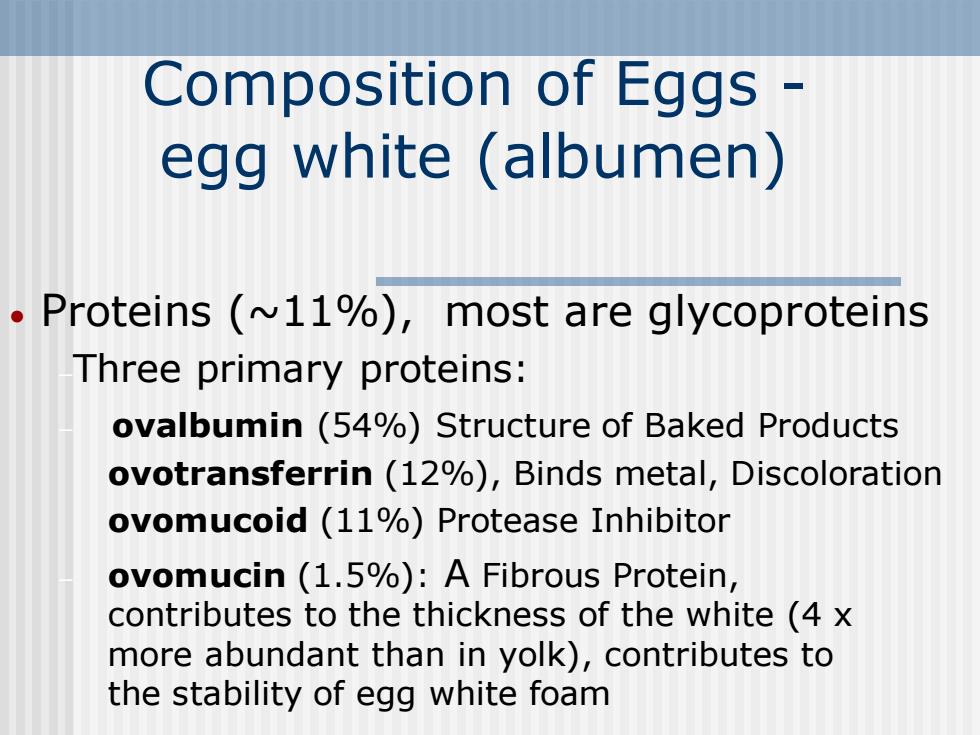
Composition of Eggs - egg white (albumen) • Proteins (~11%), most are glycoproteins −Three primary proteins: − ovalbumin (54%) Structure of Baked Products ovotransferrin (12%), Binds metal, Discoloration ovomucoid (11%) Protease Inhibitor − ovomucin (1.5%): A Fibrous Protein, contributes to the thickness of the white (4 x more abundant than in yolk), contributes to the stability of egg white foam
Composition of Eggs - egg white (albumen) • Proteins (~11%), most are glycoproteins −Three primary proteins: − ovalbumin (54%) Structure of Baked Products ovotransferrin (12%), Binds metal, Discoloration ovomucoid (11%) Protease Inhibitor − ovomucin (1.5%): A Fibrous Protein, contributes to the thickness of the white (4 x more abundant than in yolk), contributes to the stability of egg white foam
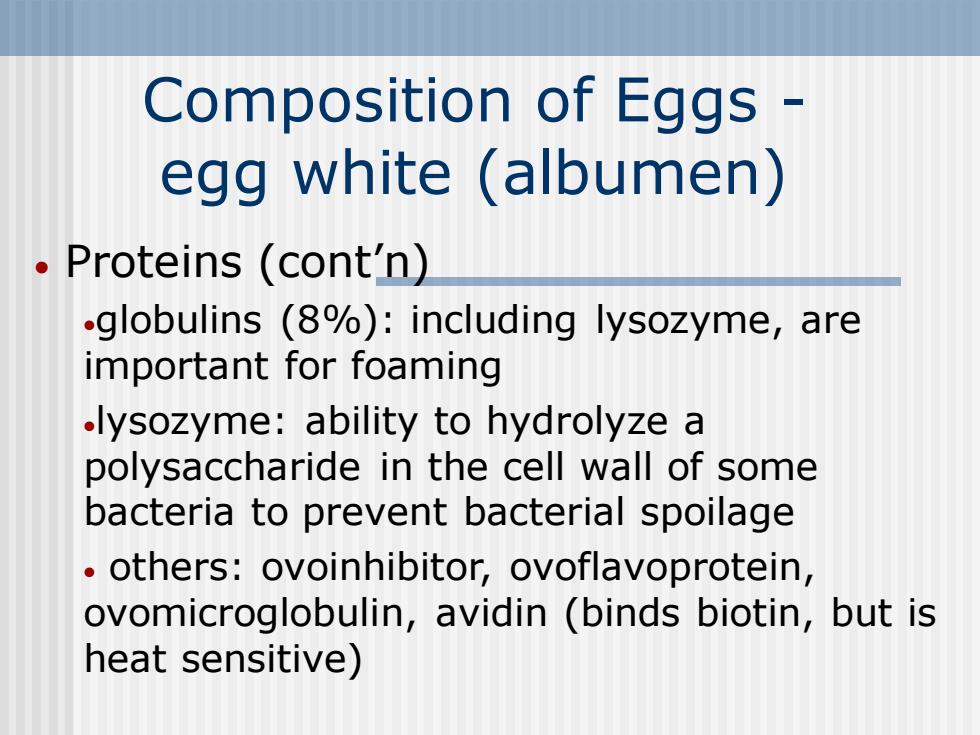
Composition of Eggs - egg white (albumen) • Proteins (cont’n) •globulins (8%): including lysozyme, are important for foaming •lysozyme: ability to hydrolyze a polysaccharide in the cell wall of some bacteria to prevent bacterial spoilage • others: ovoinhibitor, ovoflavoprotein, ovomicroglobulin, avidin (binds biotin, but is heat sensitive)
Composition of Eggs - egg white (albumen) • Proteins (cont’n) •globulins (8%): including lysozyme, are important for foaming •lysozyme: ability to hydrolyze a polysaccharide in the cell wall of some bacteria to prevent bacterial spoilage • others: ovoinhibitor, ovoflavoprotein, ovomicroglobulin, avidin (binds biotin, but is heat sensitive)
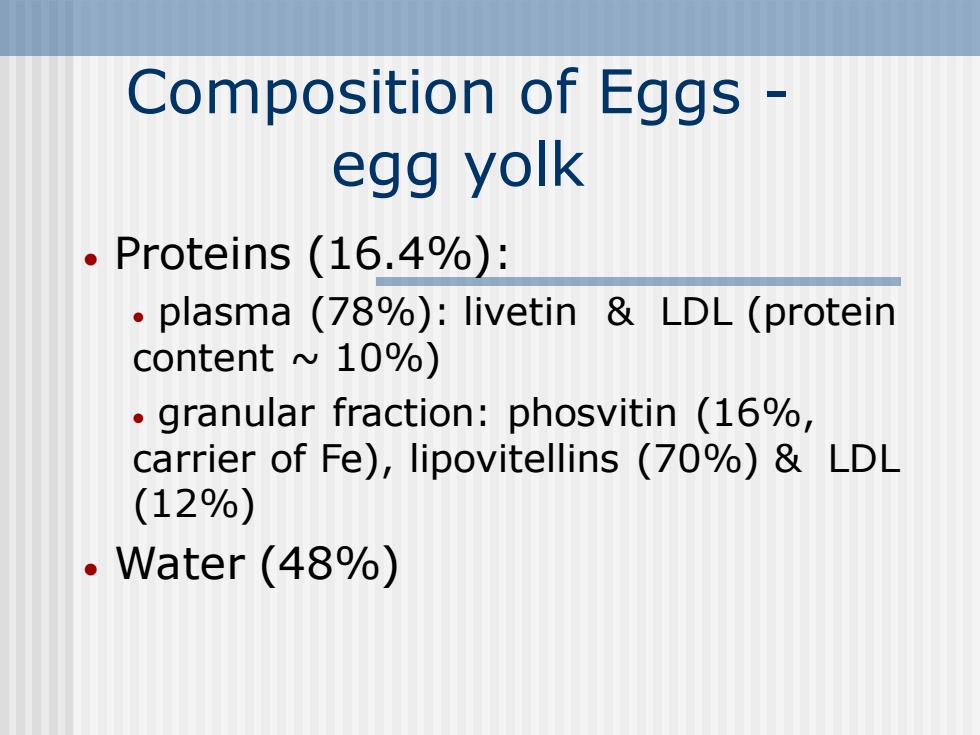
Composition of Eggs - egg yolk • Proteins (16.4%): • plasma (78%): livetin & LDL (protein content ~ 10%) • granular fraction: phosvitin (16%, carrier of Fe), lipovitellins (70%) & LDL (12%) • Water (48%)
Composition of Eggs - egg yolk • Proteins (16.4%): • plasma (78%): livetin & LDL (protein content ~ 10%) • granular fraction: phosvitin (16%, carrier of Fe), lipovitellins (70%) & LDL (12%) • Water (48%)
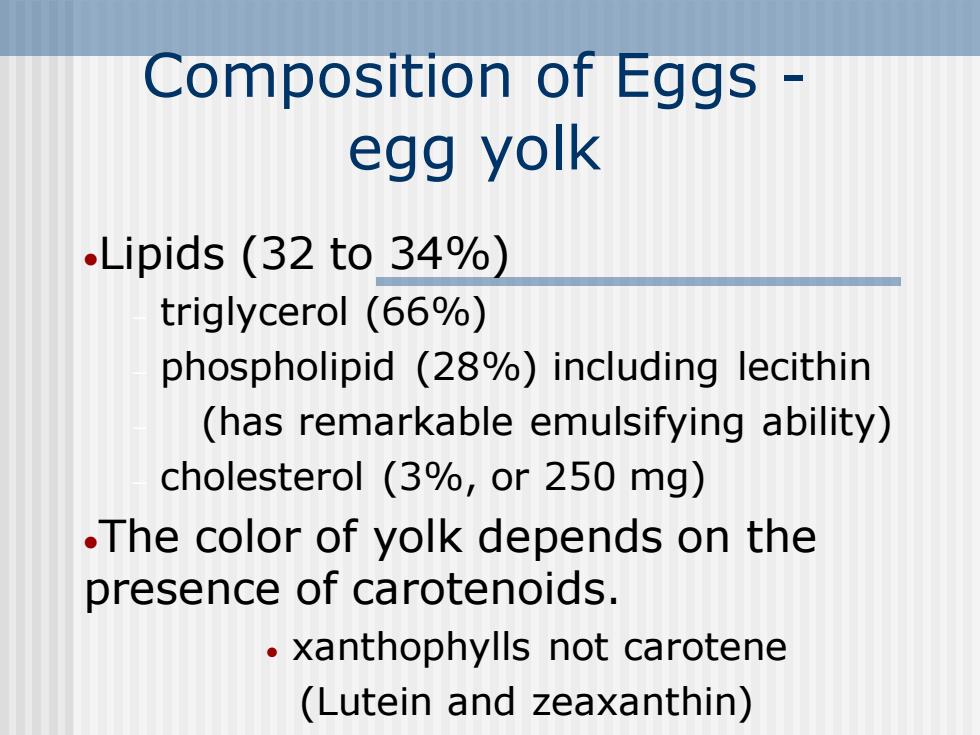
Composition of Eggs - egg yolk •Lipids (32 to 34%) − triglycerol (66%) − phospholipid (28%) including lecithin − (has remarkable emulsifying ability) − cholesterol (3%, or 250 mg) •The color of yolk depends on the presence of carotenoids. • xanthophylls not carotene (Lutein and zeaxanthin)
Composition of Eggs - egg yolk •Lipids (32 to 34%) − triglycerol (66%) − phospholipid (28%) including lecithin − (has remarkable emulsifying ability) − cholesterol (3%, or 250 mg) •The color of yolk depends on the presence of carotenoids. • xanthophylls not carotene (Lutein and zeaxanthin)

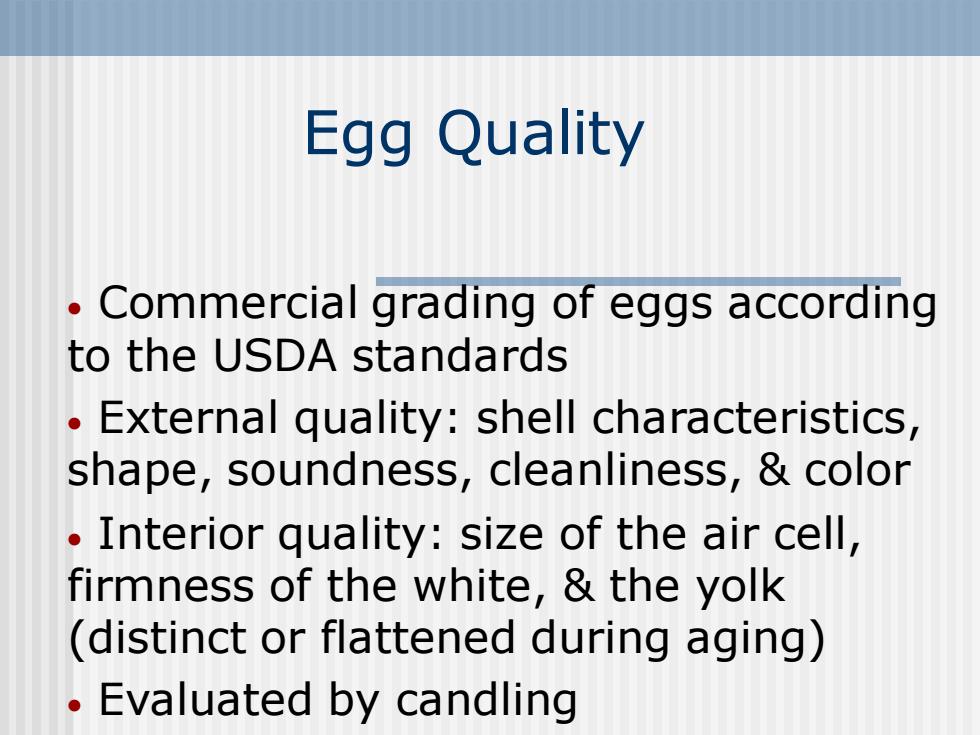
Egg Quality • Commercial grading of eggs according to the USDA standards • External quality: shell characteristics, shape, soundness, cleanliness, & color • Interior quality: size of the air cell, firmness of the white, & the yolk (distinct or flattened during aging) • Evaluated by candling
Egg Quality • Commercial grading of eggs according to the USDA standards • External quality: shell characteristics, shape, soundness, cleanliness, & color • Interior quality: size of the air cell, firmness of the white, & the yolk (distinct or flattened during aging) • Evaluated by candling
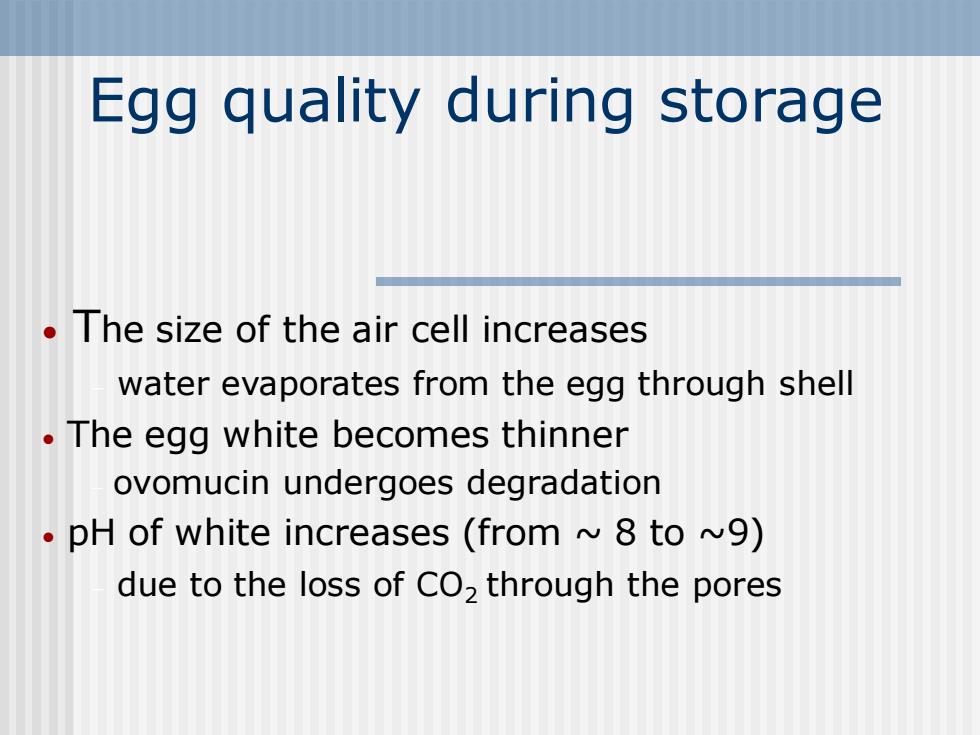
Egg quality during storage • The size of the air cell increases − water evaporates from the egg through shell • The egg white becomes thinner − ovomucin undergoes degradation • pH of white increases (from ~ 8 to ~9) − due to the loss of CO2 through the pores
Egg quality during storage • The size of the air cell increases − water evaporates from the egg through shell • The egg white becomes thinner − ovomucin undergoes degradation • pH of white increases (from ~ 8 to ~9) − due to the loss of CO2 through the pores